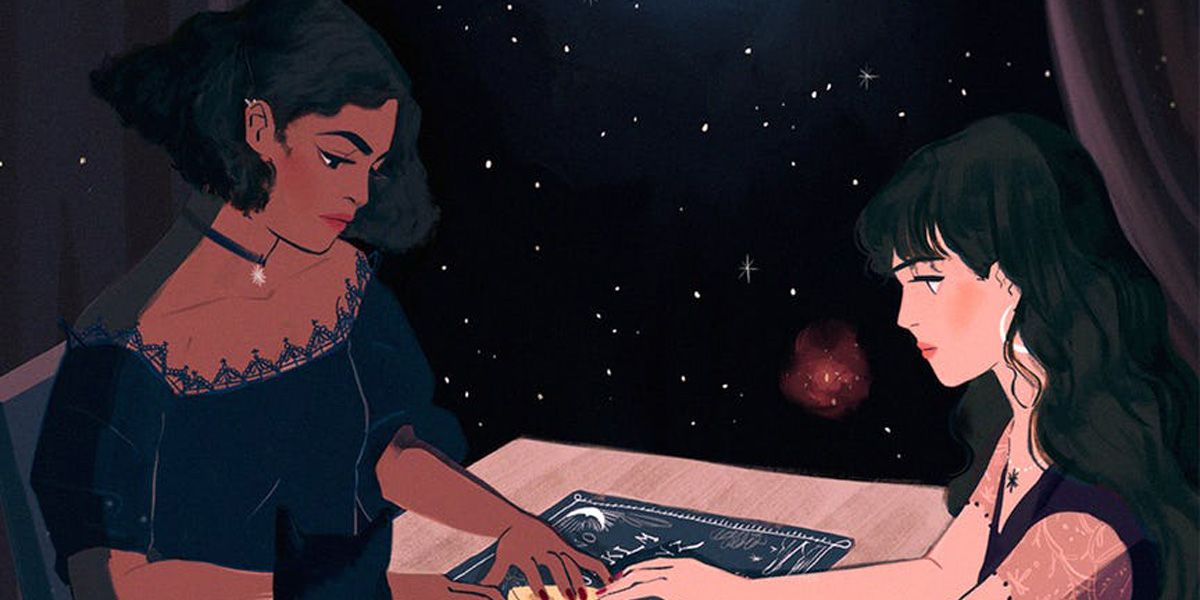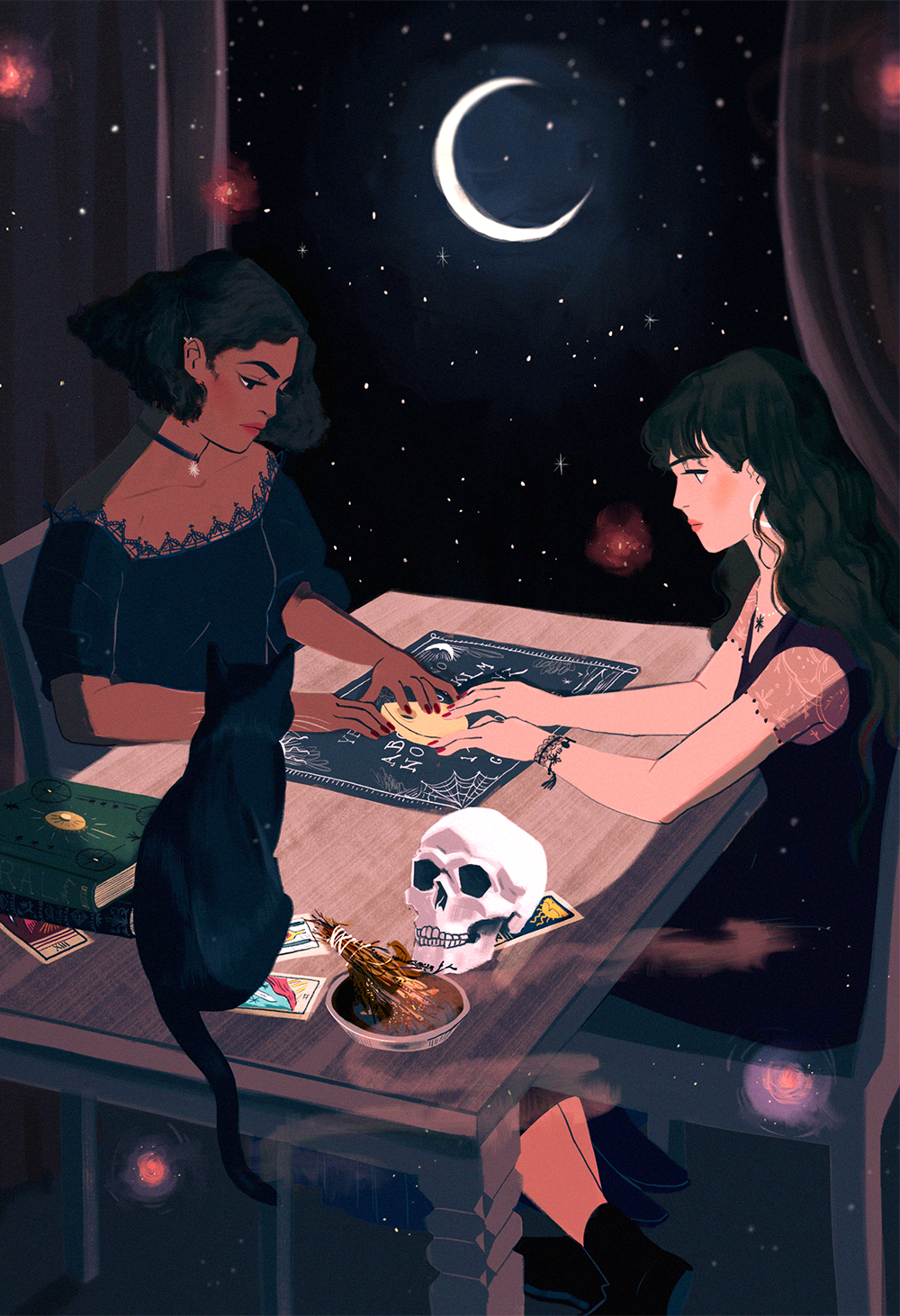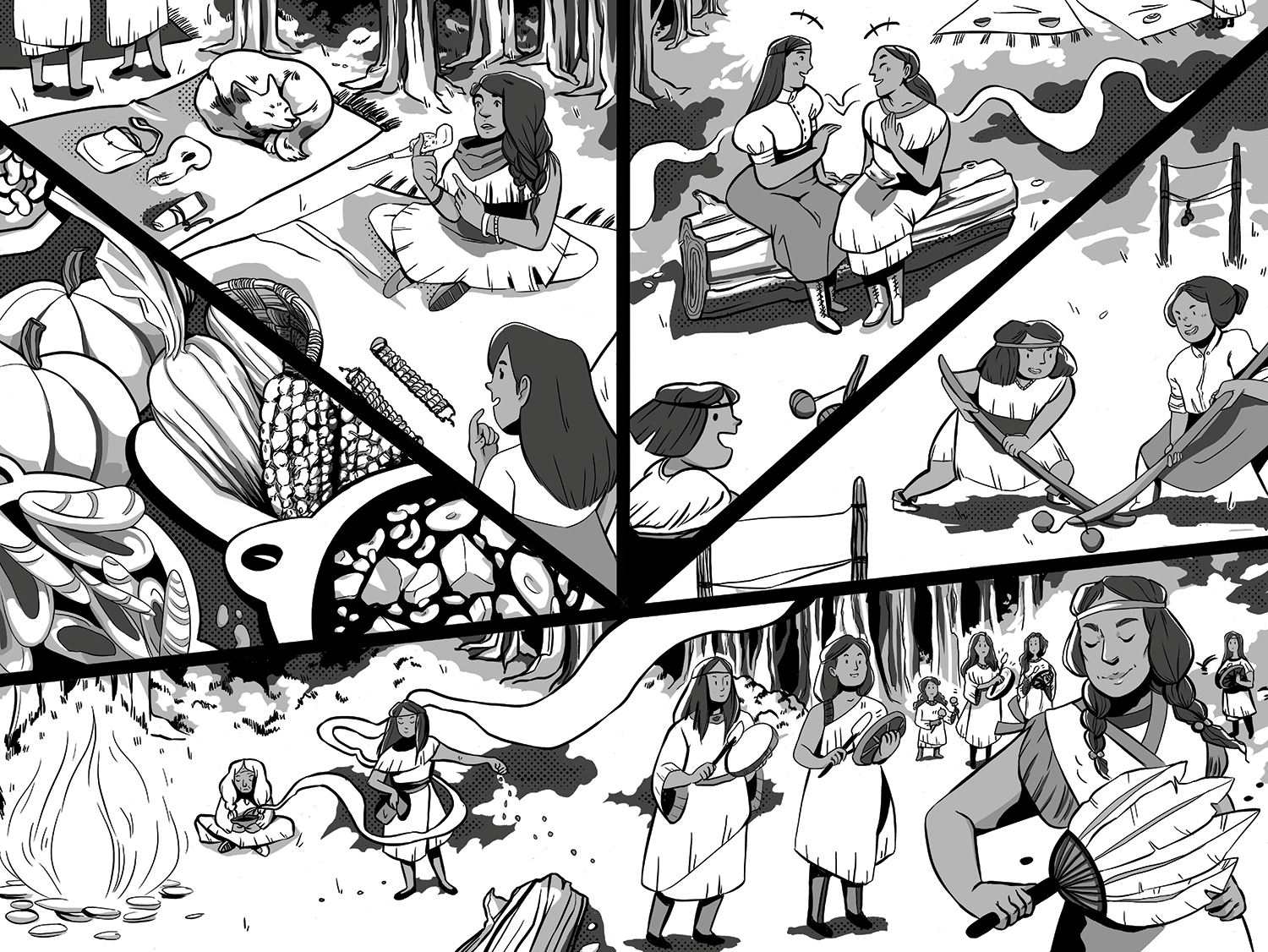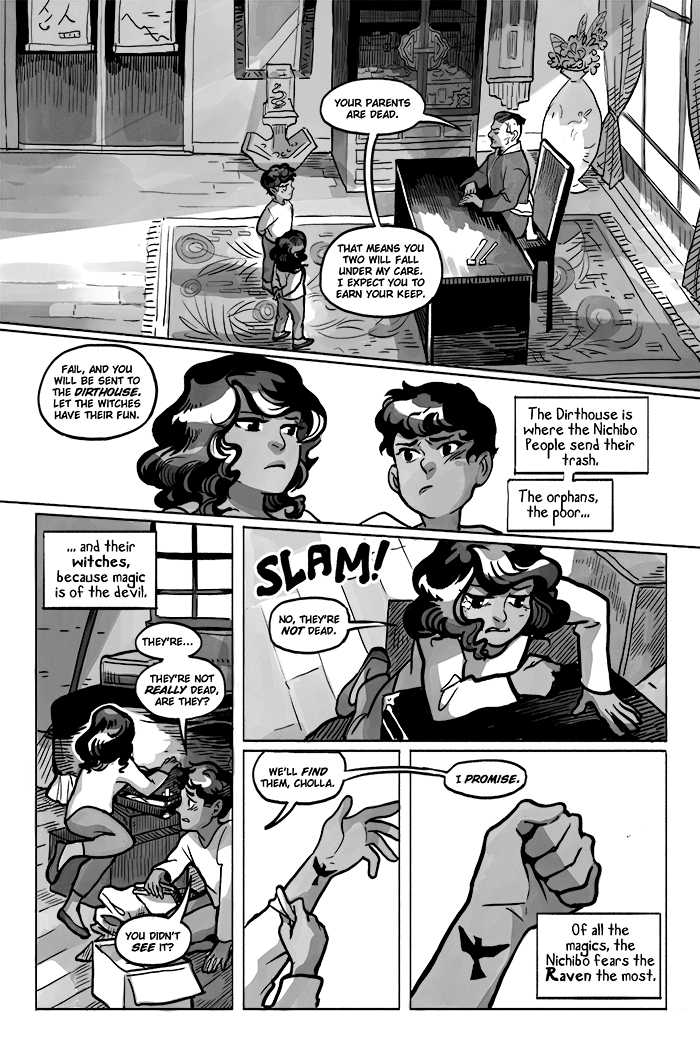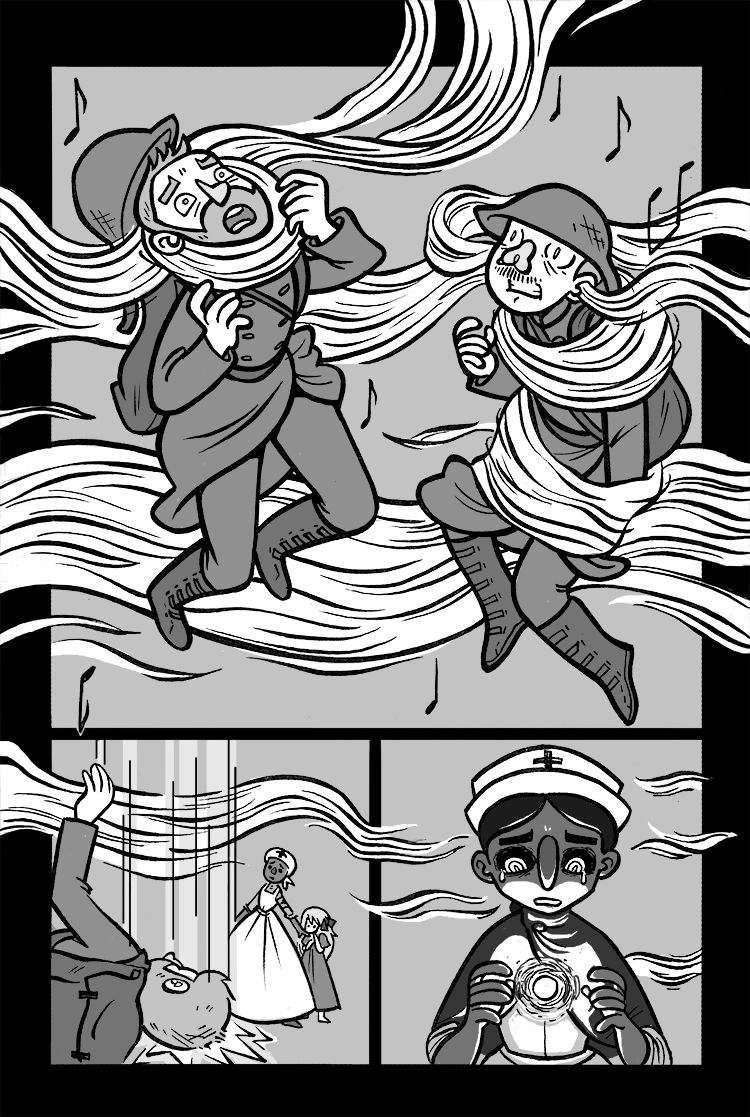In 2016, comics anthology Power & Magic took a theme of "queer witches of color" and turned it into an expansive, diverse set of stories from writers and artists living round the world. Edited by Joamette Gil and funded through a successful Kickstarter campaign, the project offered a spotlight to new and exciting creators whose work wasn't being published elsewhere -- and the reception from readers and critics alike was hugely positive, with the book winning a Prism Award at this year's inaugural ceremony.
This year Gil is back as editor, with a follow-up comics anthology planned called Power & Magic: Immortal Souls, which is currently running on Kickstarter now. Immortal Souls follows the success of the first book, this time around with a tighter focus on the concepts of death and spirit-world based magic.
Clearly her approach has found an impressive fanbase, and the stories are appealing to readers who might not otherwise be reading and enjoying comics on a regular basis -- so CBR spoke to her about her approach to making and publishing comics, as well as what readers can expect from the second anthology this year.
CBR: Power & Magic: Immortal Souls is the second anthology you’ve edited and overseen with the Power and Magic title. For those new to the series, what’s the general idea of Power & Magic as an ongoing comics series?
Joamette Gil: The Power & Magic anthology series exists to showcase comics creators of color who identify as women, demigirls, genderfluid, 2spirit, bigender, or any other gender adjacent to womanhood. The overarching series theme is "queer witches of color," and special installments with a tighter focus and lower page count will be periodically released between volumes. Immortal Souls is the first such installment, focusing on death and spirit world-based magic.
How did you originally choose the theme of the comics? Not just the idea of looking at magical stories and introducing the element of Wicca -- but exploring that idea of power, control, and the darker influences of magic?
Gil: [Laughs] I keep sort of stumbling into these good ideas, Steve! As you'll remember, my idea for a more loosely "queer POC fantasy" anthology was colored by the fact that I was working on the call for submissions during #WitchsonaWeek and my subsequent epiphany that witches have been the most formative archetype throughout my life. Don't think less of me for quoting myself, as I put it about as well here as I possibly can:
The witch is labeled mischievous and evil because she defies her role, refusing to be silent, passive, or selfless. She is embraced by many as a feminist symbol, a gender outsider. “We are the granddaughters of the witches you couldn’t burn.” But queer women of color are not the granddaughters of witches who didn’t burn: we are the witches who are still on fire.
Despite overwhelming interest in the book, I opted to include fewer stories in volume one than what's usual for similar projects in order to make a higher-than-usual page rate feasible. There was one cluster of submissions in particular that came extremely close to making that narrow cut and ultimately didn't for one, single reason: they all had something to do with death, spirits, and souls! Fewer endings were happy, and stakes were higher. This sub-theme was so pronounced among them that I literally had to set myself a little quota of how many I could put in Power &a Magic without needing to rebrand it altogether.
From there, I conceived of Immortal Souls as a space for these stories, and I started production planning before the first Power & Magic Kickstarter even launched. My confidence was through the roof at that point as you can probably tell! So far comics readers and Prism Award judges alike have only confirmed what I already believed: people want queer witches of color and the breadth of feminist stories they can carry.
What kind of stories can we expect from this second anthology? What were the ideas that most interested you as an editor?
Gil: Survival, spiritual resilience, transcending imposed boundaries, revenge beyond the grave, embracing darkness, "be careful what you wish for" style tampering with the forces of life and death -- there's a lot. A fair number of stories are "spoopy" and fun, but creators were also given space to process grief and rage through these comics -- emotions for which women of color in particular are too often punished. As with the first volume, there will be clear trigger warnings in the table of contents to facilitate reader autonomy and safety. While it's easy for certain writers to veer into gratuitousness, exploitation, and "shock value" -- especially in the realm of horror -- my creators never do so.
One of my favorite stories from this volume is "Requiem" by Ayanni C. Hanna and Melanie Tingdahl. Without spoiling it, it's an incredibly subtle examination of love, fear, and where the two meet, set against a WWI-esque conflict. Another is "Bon Voyage My Chains" by Sonia Liao, who crafted an entire Pan-Asian fantasy setting and explores the prejudices of said world, all in 14 pages with deft precision.
Was it important to you that the book offer a showcase for queer creators; and for writers and artists of color, both for readers and for yourself personally?
Gil: I'm happy you asked because that's a super popular misconception about Power & Magic! I actually have no idea if every creator is queer. I know as much about everyone's gender as they were comfortable sharing, but I purposely made sexual/romantic orientation irrelevant to acceptance because... well, sometimes people have no idea they are queer for a while, and some of our writers are pretty young!
It's absolutely valid and crucial to have spaces that are exclusive to queer-identifying people; I just chose a different route for this project. Most creators volunteered their orientation, so I can say the majority of our creators actively identify as queer. Now is it a coincidence that the best queer stories were almost all by actual queer people? Probably not! Showcasing creators of color, however, was never negotiable for me. That's something the world can see about you, something that has affected every single interaction of your life in a white-dominated world from the day of your birth, before you can even conceive of your own desires.
The wider comics industry is unfortunately reflective of that status quo, and I hope to do what I can to change that a little bit at a time.
As you mentioned earlier, the first volume of Power & Magic recently won a Prism Award at this year’s inaugural ceremony. Has it been empowering to see the positive response that the anthology received from fans, critics, and the industry as a whole?
Gil: Absolutely! The response truly has been universally positive, and it makes me unbelievably proud of everyone who put their heart and labor into the book. It's also heartening to know that I'm on the right track with this whole "editing other people's comics" thing!
Things have moved quite rapidly for you since the release of the first volume: you’ve set up a publisher, Power & Magic Press, based in Portland. With your second Kickstarter now launching, what kind of long-term plans do you have in mind for where you want to take Power & Magic moving forward?
Gil: I physically want to take Power & Magic to a storage unit and out of my living room! [Laughs] But in all seriousness, the Power & Magic anthology series will continue into the foreseeable future (the official second volume will open for submissions first half of 2018), and before that there will be open submissions for an all non-binary fantasy project.
Special editions like Immortal Souls will happen as well. Every other plan is currently too nascent to even hint at right now -- suffice it to say that P&M Press is here to stay.
The Power & Magic: Immortal Souls Kickstarter will run online until Aug. 11, seeking a funding target of $27,500. To find out more, head to the Kickstarter page here!

